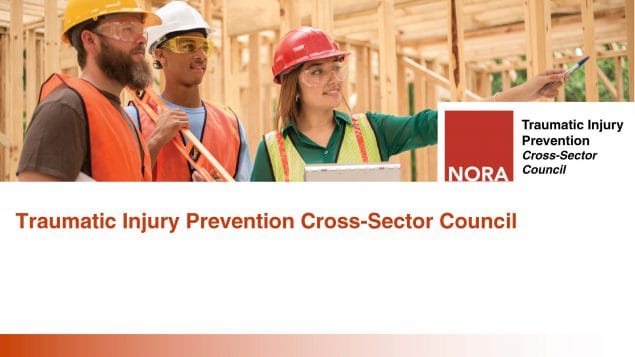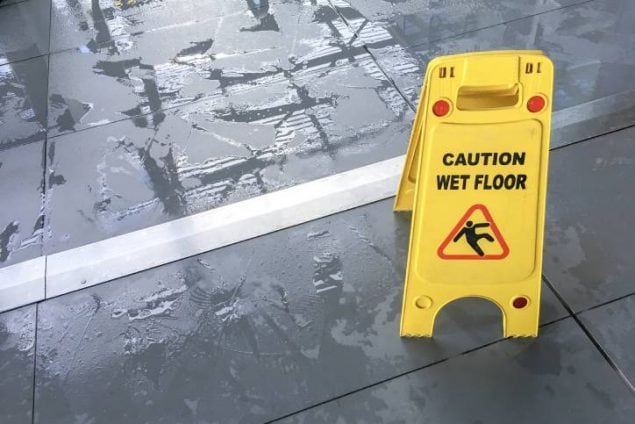NORA Traumatic Injury Prevention Cross-Sector Council

The NORA Traumatic Injury Prevention Council brings together individuals and organizations with a shared interest in preventing workplace injuries. Council members share information, form partnerships, and promote adoption and dissemination of solutions that work. Contact the NORA Coordinator to volunteer.
The NORA Traumatic Injury Prevention (TIP) Council developed several communication resources. These materials are aimed at engaging the next generation of public health, engineering, and safety professionals; and improving workplace safety and reducing traumatic injuries and deaths.
Slide Deck: Student Introduction to NORA and TIP
The Traumatic Injury Prevention (TIP) Council slide deck is a useful tool for introducing students across different disciplines to NORA and the TIP Research Agenda.
To obtain a PowerPoint file, please email the NORA Coordinator at NORACoordinator@cdc.gov.
Posters: Slip Resistant Shoe Tread Wear
Food service and healthcare workers are exposed to slip hazards on the job, including when the tread on their shoes becomes worn down. These posters help workers check the tread on their shoes with a simple visual aid (using a AA battery), and determine if it is time to replace their shoes.
Science Blog: Homecare workers
A Council workgroup produced a NIOSH Science Blog, Home Healthcare Workers: A Growing and Diverse Workforce at High Risk for Workplace Violence. It describes the home healthcare workforce, data on workplace violence experienced by these workers, and strategies for prevention.
The NORA Traumatic Injury Prevention Council identified research priorities for the third decade of NORA (2016-2026) in the National Occupational Research Agenda for Traumatic Injury Prevention. The agenda identifies eight research objectives for the nation.
The first four objectives focus on leading causes of occupational injury. The remaining four objectives are cross-cutting and address all types of traumatic occupational injuries and work environments. They are not presented in any order of priority or importance.
- Prevent work-related motor vehicle crashes and injuries
- Reduce falls and advance fall protection
- Reduce violence in the workplace
- Prevent injuries related to human-machine interaction for current and evolving technologies
- Promote safety in non-standard work arrangements
- Improve occupational safety equity across worker populations
- Improve organization-based injury prevention
- Promote rigorous evaluations of occupational injury prevention programs and efforts
The Traumatic Injury Prevention Cross-Sector focuses on preventing injuries and related deaths to workers due to sudden events. Examples include
- Falls
- Motor vehicle crashes
- Violence
- Being caught in or struck by machinery
Traumatic injury is a leading cause of injury in nearly all industry sectors.
The NIOSH Traumatic Injury Prevention Program facilitates the work of the Council and coordinates NIOSH research in this cross-sector.

